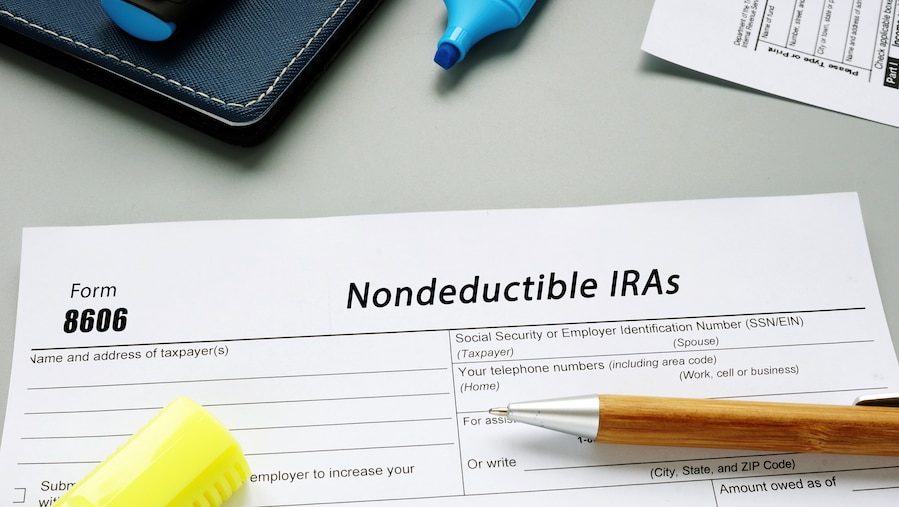Clients may assume that if something isn’t either taxable income or a tax deduction for the current year, they don’t need to tell their tax professional about it. But, sometimes those things can have a big impact down the road.
Nondeductible contributions to a traditional IRA are a prime example of this. This can happen when a client’s income is over the threshold for making a deductible contribution. Those limits are surprisingly low if a taxpayer, or his or her spouse, is covered by a retirement plan at work. When taxable income is over the limit, the deductible portion of an IRA contribution begins to phase out, until the top of the phase-out range is reached.
Beware of low income limits for deductible contributions
To see how low those limits are, here are the phase-out ranges for 2019:
- Single taxpayer covered by a retirement plan at work: $64,000 to $74,000.
- Married couple filing jointly and the person making the IRA contribution are covered by a retirement plan at work: $103,000 to $123,000.
- Married couple filing jointly and the person making the IRA contribution are not covered by a retirement plan at work, but the spouse is covered: $193,000 to $203,000.
- Married person filing separately is making an IRA contribution and is covered by a retirement plan at work: $0 to $10,000.
If no one on the tax return is covered by a retirement plan at work, the limits don’t apply.
Nondeductible IRA contributions create basis
If your client falls into one of these situations, then any nondeductible IRA contributions create basis in their IRA. While nondeductible IRA contributions don’t impact the current year’s taxes, they can have a big impact when the IRA owner starts taking distributions.
The default assumption for distributions from a traditional IRA is that the whole distribution is taxable. However, if that person has basis in any of their traditional IRAs, then a pro-rata portion of their total IRA distributions will be a return of basis, and thus excluded from taxable income.
Sounds simple, right?
How is basis tracked?
Except that the IRS expects taxpayers to track IRA basis themselves. This is done by filing Form 8606, Nondeductible IRAs, when nondeductible contributions are made to a traditional IRA. Form 8606 is also used to calculate the taxable portions of traditional IRA distributions when the taxpayer has basis, taxes due on conversions to Roth IRAs, and distributions from Roth IRAs. This form is only required when one of those circumstances occurs during the current tax year.
As I mentioned above, clients might not realize how important this form will be in the future because that nondeductible contribution doesn’t impact their taxes this year. This means that when your clients start taking distributions from a traditional IRAs, if you don’t know that they have basis in their IRAs, they might pay too much tax.
What are the remedies?
If your client hasn’t filed Form 8606 for prior years, that form can be filed on a standalone basis, and even past the usual three-year limit for requesting a refund. There may be a $50 penalty for failing to file Form 8606 when it was required, but it’s possible to have that penalty waived for reasonable cause. Since this isn’t changing taxable income, no 1040X is required.
The stance of the IRS has long been that without any history of filing Form 8606, there’s no basis. However, a few recent court cases have forced the IRS to take a broader approach, and to accept other evidence a taxpayer might have. This might be a prior year tax return that doesn’t show a deduction for an IRA contribution, combined with an IRA statement that shows a contribution was made.
This means that besides filing Form 8606, it’s a good idea for advisors to assist their clients in tracking their basis. Other than the history of filing Form 8606, the IRS doesn’t actively track basis. Investment advisors may not have any records of basis either.
This is especially a problem for inherited IRAs. If your client inherits an IRA, it’s a good idea to request prior year tax returns for the decedent to see if Form 8606 was ever filed. It may also be a good idea to ask for IRA statements that show contributions.
Filing Form 8606 might seem like a hassle when it doesn’t impact taxable income, but the future impact of not filing it can be huge. So, be sure to ask your clients about all of their IRA contributions!
